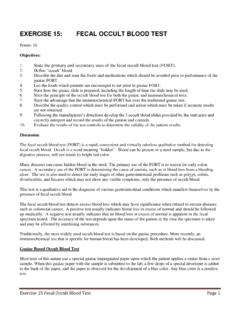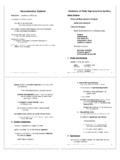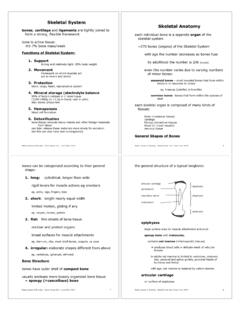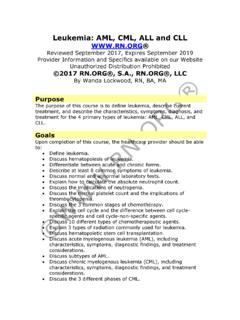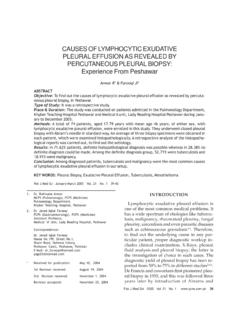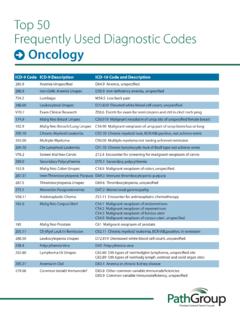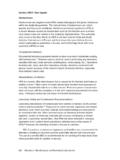Transcription of Hematology review - Austin Community College
1 Hematology reviewMihaelaMates PGY3 Internal MedicineNormal hematopoiesisHemoglobin Approach to anemia Definition (The WHO criteria): Men: Hb< g/dLor Ht<40% Women: Hb< g/dLor Ht<36% Useful measurements: Mean corpuscular volume (MCV): 80 to 100 fl RDW (red cell distribution width): increased RDW indicates the presence of cells of widely differing sizes Reticulocytes: suggestive of regeneration Approach to Anemia Microcytic: MCV low, RDW high -iron deficiency MCV low, RDW normal thalassemia Macrocytic: MCV very high -B12 or folate deficiency Normocytic.
2 MCV normalMorphologic approach Microcyticanemia MCV < 80 fl Reduced iron availability severe iron deficiency, the anemia of chronic disease, copper deficiency Reduced hemesynthesis lead poisoning, congenital or acquired sideroblasticanemia Reduced globinproduction thalassemicstates, other hemoglobinopathies The three most common causes of microcytosisin clinical practice are iron deficiency ( iron stores) alpha or beta thalassemiaminor (often N or iron stores) anemia of chronic disease (hepatoma, RCC) Morphologic approach Macrocyticanemia MCV > 100 fL Reticulocytosis Abnormal nucleic acid metabolism of erythroidprecursors (eg, folate or vitamin 12 deficiency and drugs interfering with nucleic acid synthesis, such as zidovudine, hydroxyureaand Septra) Abnormal RBC maturation (eg, myelodysplasticsyndrome, acute leukemia, LGL leukemia) Other common causes.
3 Alcohol abuse liver disease hypothyroidismMorphologic approach Normocyticanemia MCV normal Increased distruction Reduced production (bone marrow supression): Bone marrow invasion (myelofibrosis, multiple myeloma) Myelodysplasticsyndromes Aplasticanemia Acute blood loss Chronic renal failureIron deficient anemia Diagnosis: serum iron TIBC Transferrinsaturation <20% Ferritin< 10 Iron replacement requires normalization of the hemoglobin and the body stores ALWAYS A SYMPTOM LOOK FOR THE CAUSEIron deficient anemiaAnemia of Chronic Disease Common in patients with infection, cancer, inflammatory and rheumatologic diseases Iron can not be remobilized from storage Blunted production of erythropoietin and response to erythropoietin Usually normocytic and normochromic but may be microcytic if severe TIBC , Iron.
4 Transferrinsaturation , Ferritin Anemia of Chronic DiseaseSideroblastic Anemia Two common features: Ring sideroblastsin the bone marrow (abnormal normoblastswith excessive accumulation of iron in the mitochondria) Impaired hemebiosynthesis Produces a dimorphic blood film with microcytes and macrocytes Usually acquired: Myelodysplasticsyndrome Drugs (Ethanol, INH) Toxins (Lead, zinc) Nutritional (Pyridoxine deficiency, copper deficiency)SideroblasticAnemiaThalassemi a Anemia 2 reduced or absent production of one or more globinchains Poikilocytosis(variation in shape) and basophilic stippling may be seen in the blood film Hemoglobin electrophoresis is only diagnostic for beta-thalassemiaand may not be diagnostic if iron deficiency is also present Hb H ( -4)
5 Prep or DNA analysis is needed to diagnose alpha-thalassemiaBasophilic stippling (ribosomal precipitates)Sickle Cell Disease Inherited anemia (HbS) Acute crisis management includes fluids, oxygen and pain control +/-transfusion Transfusion therapy, hydroxyurea, magnesium and clotrimazole may reduce the frequency of vaso-occlusive crises Full vaccination program essential before functional hyposplenism develops Transplant may be curative Sickle Cell DiseaseB12 Deficiency Megaloblasticanemia (macrocytosis, hypersegmentedneutrophils, abnormal megakaryocytes)
6 Be aware of the neurological complications Never treat possible B12deficiency with folate -the CNS lesions may progress Schilling test distinguishes pernicious anemia from other causesMegaloblasticsmearFolic Acid Deficiency The peripheral blood film and bone marrow are identical to B12deficiency Women of childbearing age should take supplemental folate to prevent neural tube defects in their children Folate supplementation lowers homocysteine levels leading to less heart disease and strokeHemolytic anemia Extravascularhemolysis Increased reticulocytes Increased serum lactate dehydrogenase(LDH) Increased indirect bilirubinconcentration Intravascular hemolysis: RBC fragments, hemoglobinuria, urinary hemosiderin, decreased haptoglobin Immune (positive direct antiglobulintest) Nonimmune(microangiopathichemolytic anemia)Hemolytic Anemia-IntravascularInherent RBC Defects: Enzyme defects -G6 PDAcquired Causes.
7 Non-immune Drowning, burns, infections, PNH RBC fragmentation DIC prosthetic heart valves vasculitis TTPH emolytic Anemia-ExtravascularInherited RBC Defects: Membrane defects -hereditary spherocytosisand elliptocytosis Hemoglobinopathy-Sickle Cell Disease, ThalassemiaImmune causes: Hemolytic transfusion reactions AIHA-primary or secondary Drugs eg. penicillin Cold agglutininsApproach to Bruising & Bleeding Family history -bleeding or transfusion Drugs -ASA, NSAIDS and alcohol, steroids Other diseases -myeloma, renal or liver disease Pattern -lifelong or recent, deep seated bleeds or superficial bruising and petechiae Check for the spleen, petechiae, purpura and telangiectasiaHemostasis Investigations Platelet count and platelet function studies INR, PTT, fibrinogen, FDP.
8 Bleeding time Thrombin time and reptilasetime Euglobulin lysis time Inhibitor studies Factor assays made in the liver, vitamin K dependent -7 made in the liver, not vitamin K dependant -5 made in endothelial cells -8 Platelets Acquired dysfunction is common in ill patients and DDAVP is often a valuable treatment The blood film helps differentiate ITP from the early phases of TTP. RBC fragments are present in TTP but not in ITP. Consider a bone marrow if platelet count is very lowApproach to thrombocytopenia Increase distruction(ITP, TTP, HIT) Decreased production (amegakaryocyticthrombocytopenia, aplasticanemia, acute leukemia, etc) Idiopathic (ITP) Secondary: Drug toxicity Connective tissue diseases Infections: HIV HypersplenismThromboticthrombocytopenic purpura Diagnosis.
9 Microangiopathichemolytic anemia =nonimmunehemolysis(negative direct antiglobulintest) with prominent red cell fragmentation (>1%) Thrombocytopenia Acute renal insufficiency Neurological abnormalities (fluctuating) FeverMicroangiopathicblood smearImmune Thrombocytopenic Purpura Acquired: postviralinfections in children (history of infection in the several weeks preceding the illness) Immune/Idiopathic: Mainstemof treatment: steroids (response in up to 2 weeks) If no response to steroids after 2 weeks consider splenectomy In severe bleeding treat with IvIg(rapid response)Disorders of Secondary HemostasisHereditary Hemophilia A (factor VIII deficiency) and Hemophilia B (factor IX deficiency) are X-linked and produce hemarthroses and hematomas and are treated with recombinant factor concentrates and DDAVP (prolonged PTT) von Willebrand s disease (prolonged bleeding time and prolonged PTT)
10 Disorders of Secondary HemostasisAcquired Vitamin K deficiency (factors II, VII, IX and X) Liver disease (all factors other than VIII) Circulating anticoagulants (lupus anticoagulant) DIC DIC DIC = uncontrolled THROMBIN and PLASMIN Excess thrombin leads to clotting, excess plasmin leads to bleeding Numerous disorders can trigger DIC ie. Sepsis, trauma, cancer, fat or amniotic fluid emboli, acute promyelocytic leukemiaDIC Can be acute or chronic Produces RBC fragmentation, confusion or coma, focal necrosis in the skin, ARDS, renal failure, bleeding and hypercoagulabilityManagement of DIC Treat the underlyi


